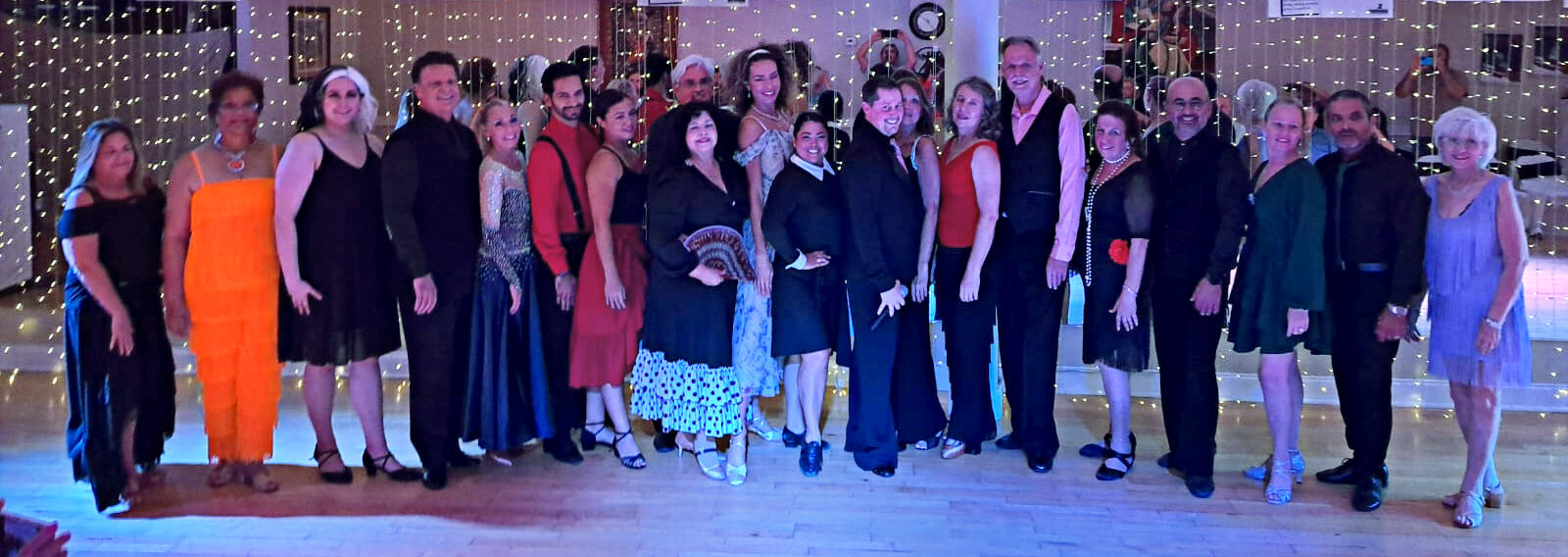Your cart is currently empty!
New Student Special: Join us JUNE 16th – 19th, for NO CHARGE group classes at 7:00PM. (NEW STUDENTS ONLY)

Bachata
Bachata is a style of dance that originated in the Dominican Republic. It is danced widely all over the world but not identically.
In partnering, the leader can decide whether to perform in open or closed position. Dance moves, or step variety, during performance strongly depends on the music (such as the rhythms played by the different instruments), setting, mood, and interpretation. Unlike Salsa, Bachata dance does not usually include complex turn patterns but they are used more and more as the dance evolves. The leading is done just like in most other social dances, with a “pushing and pulling” hand and arm communication. Hand and arm communication is better conveyed when most of the movement is performed by the lower body (from waist down); i.e. hips and footwork.
The original dance style from the Dominican Republic in the Caribbean is a basic dance sequence in a full 8 count moving within a square. Dancers in the Western World later began developing a more simple pattern and added dance elements from other dances as well, the basic is also in a full 8 count, but with a side-to-side motion. Both Styles consist of 3 steps and then a tap, hip lift, or embellishment of some kind. Bachata music has an accent in rhythm at every fourth count and often is when dancers will tap & pop their hips. But bachata can be danced to different timings as well if it’s danced to one particular instrument instead. The tab or ‘pop’ is done in the opposite direction of the third step, while the next step is taken in the same direction as the tap or pop.
At some point in the late 1990s, dancers and dance-schools in the Western World adopted the simpler side to side pattern instead of the box-step probably due to a misunderstanding of the original steps. This adaptation is now widely recognized and popularized by Dance Schools today outside the Dominican Republic.


